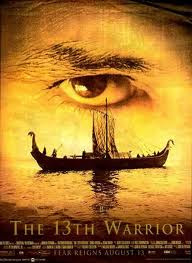Caedmon’s Hymn
Caedmon is considered the first English poet and Caedmon’s hymn marks the first major move from orallity to text. The hymn must have been very well known orally for it to be remembered, and it was deemed important and beautiful enough to want to write it down. It was written in a pagan society but Caedmons hymn is a hymn not a poem and by definition has religious connotations. It takes the form of a ‘dream vision narrative’ Caedmon had a dream and was visited by a religious figure, presumably God or an angel, from then onwards he was able to sing beautifully about his experience while spreading the message of God, to a chiefly pagan society. As it was an oral society the hymn was remembered simply by memorizing it and more than likely repeating it themselves at a later stage. For this reason the hymn contains a lot of alliteration and repetition. Alliteration was used a mnemonic device to help people remember the hymn. Repetition was used to ensure the basic message of the hymn would be remembered, and so that it was clear what specific point the author was trying to get across. In Caedmon’s hymn there are seven different epitaphs used for god, this shows the literary skill and variation present in medieval times, whereas in today’s written world that would be considered unimaginative and boring. The hymn is contained in Bede’s ecclesiastical history with the old English text at the bottom almost as an afterthought , the main focus of Bede is a latin version of Caedmon’s hymn. Caedmon’s hymn also encouraged the written use of the vernacular, meaning more people would be able to interpret it.
Nu scylun hergan hefaenricaes uard
metudæs maecti end his modgidanc
uerc uuldurfadur sue he uundra gihuaes
eci dryctin or astelidæ
he aerist scop aelda barnum
heben til hrofe haleg scepen.
tha middungeard moncynnæs uard
eci dryctin æfter tiadæ
firum foldu frea allmectigprimo cantauit Cædmon istud carmen.
Nu scilun herga hefenricæs uard
metudæs mehti and his modgithanc
uerc uuldurfadur sue he uundra gihuæs
eci dryctin or astelidæ.
he ærist scop ældu barnum
hefen to hrofæ halig sceppend
tha middingard moncynn&ealig;s uard
eci dryctin æfter tiadæ
firum foldu frea allmehtig
MODERN ENGLISH TRANSLATION
Now let me praise the keeper of Heaven's kingdom,
The might of the Creator, and his thought,
The work of the Father of glory, how each of wonders
The Eternal Lord established in the beginning.
He first created for the sons of men
Heaven as a roof, the holy Creator,
Then Middle-earth the keeper of mankind,
The Eternal Lord, afterwards made,
The earth for men, the Almighty Lord.
metudæs maecti end his modgidanc
uerc uuldurfadur sue he uundra gihuaes
eci dryctin or astelidæ
he aerist scop aelda barnum
heben til hrofe haleg scepen.
tha middungeard moncynnæs uard
eci dryctin æfter tiadæ
firum foldu frea allmectigprimo cantauit Cædmon istud carmen.
Nu scilun herga hefenricæs uard
metudæs mehti and his modgithanc
uerc uuldurfadur sue he uundra gihuæs
eci dryctin or astelidæ.
he ærist scop ældu barnum
hefen to hrofæ halig sceppend
tha middingard moncynn&ealig;s uard
eci dryctin æfter tiadæ
firum foldu frea allmehtig
MODERN ENGLISH TRANSLATION
Now let me praise the keeper of Heaven's kingdom,
The might of the Creator, and his thought,
The work of the Father of glory, how each of wonders
The Eternal Lord established in the beginning.
He first created for the sons of men
Heaven as a roof, the holy Creator,
Then Middle-earth the keeper of mankind,
The Eternal Lord, afterwards made,
The earth for men, the Almighty Lord.




